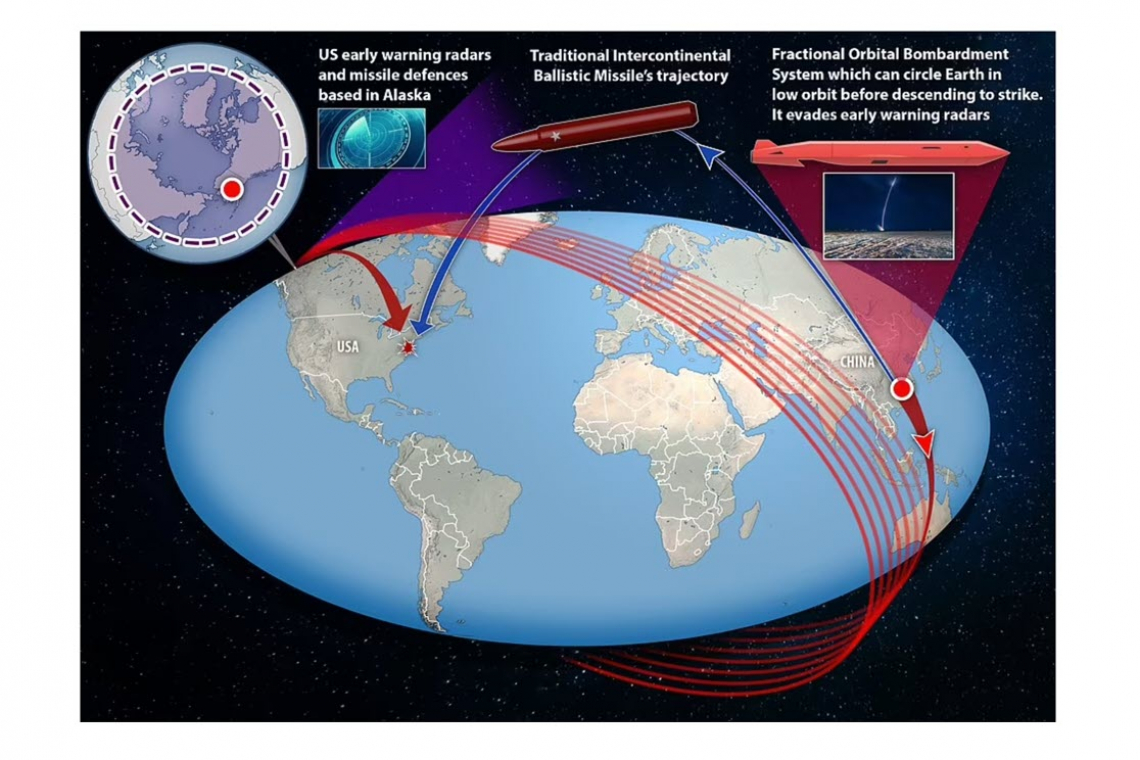New information emerging about the nuclear-capable hypersonic weapon test conducted by China in July 2021, says the missile traveled much longer in distance and time than any Chinese land attack weapons system to date coming "close enough" to its target.
"China conducted the first fractional orbital launch of an ICBM with a hypersonic glide vehicle from China on July 27th, 2021. This demonstrated the greatest distance flown (~40,000 kilometers) and longest flight time (~100+minutes) of any PRC land attack weapons system to date," the Pentagon report on China Military Power Report, released on Tuesday said.
Although the Pentagon report does not provide many details about China's hypersonic missile capabilities, a report by The War Zone says that information contained in the report conforms with statements made by top U.S. military officials.
Now-retired Air Force General John Hyten reportedly then told CBS News that China "launched a long-range missile," that "went around the world, dropped off a hypersonic glide vehicle that glided all the way back to China, that impacted a target in China." Asked if the missile hit the target, Hyten reportedly said, "Close enough."
Hyten also termed Chinese military modernization as "stunning" and reportedly warned that Beijing would one day have the capability to launch a surprise nuclear attack on the U.S.
"Why are they building all of this capability?" Hyten was quoted by CNN as saying. "They look like a first-use weapon. That's what those weapons look like to me."
While the Chinese hypersonic missile test is compared to the U.S. Air Force's own secretive X-37B uncrewed orbital vehicle more than a hypersonic missile like Russia's air-launched Kinzhal missile, military experts had said that it was unlikely to trigger an arms race between the two powers.
In recent years, China has continued to accelerate the modernization and expansion of its military forces apart from developing nuclear, space and cyberspace capabilities. Beijing's focus has also been on enhancing its deterrent capabilities and at the same time pushing forward with an ambitious expansionist narrative in the South China Sea region.


